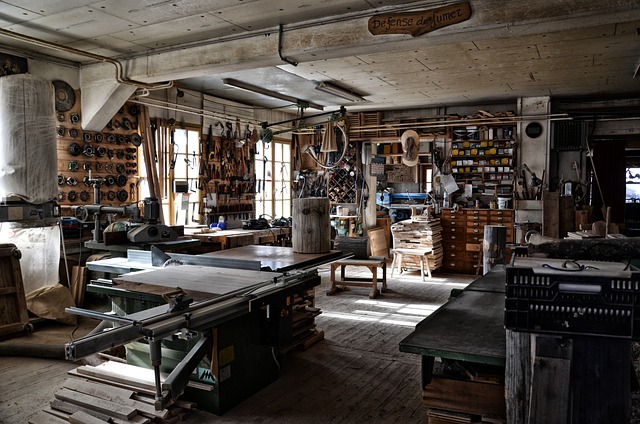Carpenters play a crucial role in optimizing a home's energy efficiency by installing various insulation materials, including fiberglass, spray foam, and cellulose. These professionals ensure that the insulation is applied perfectly to maximize thermal performance and minimize heat loss or gain. The choice of insulation material depends on factors like R-value, budget, and the home's structure, with each type offering specific benefits: fiberglass for cost-effectiveness and moisture resistance, mineral wool for high-density performance in hot environments, cellulose for sustainability and fire safety, spray foam for airtight sealing, and reflective foil insulation for heat reflection. Carpenters must select and install the most suitable material based on building requirements, local climate, space use, and adherence to building codes. Proper insulation installation by carpenters not only enhances home comfort but also leads to significant energy savings and extends the life of heating and cooling systems. Ultimately, the right insulation choice and precise application by a carpenter are essential for creating a sustainable, energy-efficient living environment.
When it comes to enhancing home efficiency, effective insulation installation in walls and ceilings is pivotal. This article delves into the essentials of home insulation from a carpenter’s perspective, offering insights into the best practices for material selection, installation techniques, and safety measures. From assessing wall and ceiling structures to choosing the appropriate insulation type and amount, carpenters play a vital role in ensuring homes are well-insulated for optimal thermal performance. We explore the various types of insulation materials suitable for different frameworks, the step-by-step process of insulating wall cavities and ceilings, and the importance of sealing gaps and vents to maintain energy efficiency. Additionally, we discuss tools and equipment necessary for successful installation, adherence to energy codes, the integration of green building practices, and a professional carpenter’s experience with diverse home insulation projects. This comprehensive guide concludes with a cost-benefit analysis, maintenance considerations, and answers to common FAQs about residential insulation upgrades.
- Understanding the Role of Insulation in Home Efficiency
- Types of Insulation Materials for Walls and Ceilings
Understanding the Role of Insulation in Home Efficiency

Insulation plays a pivotal role in enhancing the energy efficiency of homes, and understanding its application within wall and ceiling frameworks is crucial for maintaining optimal temperature conditions year-round. A skilled carpenter adept in installing various types of insulation materials is essential to achieving this goal. These professionals ensure that the insulation fits snugly into the frameworks, preventing thermal transfer and thereby reducing the need for heating and cooling systems to work overtime. The choice of material—be it fiberglass, spray foam, or cellulose—depends on factors such as R-value, cost, and the specific conditions of the building’s structure. Proper insulation installation by a carpenter not only conserves energy but also contributes to a more comfortable living environment and can lead to significant savings on utility bills. Furthermore, the right insulation levels can extend the lifespan of HVAC systems by reducing wear and tear, thereby contributing to a longer-lasting, more sustainable home. It is through meticulous installation and selection of appropriate materials that carpenters can significantly influence the energy efficiency of a dwelling.
Types of Insulation Materials for Walls and Ceilings

When considering the installation of insulation within walls and ceilings, it is imperative to select materials that are effective in conserving energy and providing thermal resistance. Carpenters play a crucial role in ensuring that these materials are properly integrated into the frameworks of buildings. Among the most common types of insulation materials are fiberglass, mineral wool, and cellulose. Fiberglass is a cost-effective option made from fine glass fibers, offering excellent thermal performance while remaining resistant to moisture. It’s typically installed in blown or batt form and is suitable for both wall and ceiling applications. Mineral wool, another strong performer, is made from basalt, slag, or recycled materials and provides robust insulation properties. Its high density makes it particularly effective in high-heat environments or where structural integrity is required. Cellulose, derived from recycled paper products, offers a sustainable choice that also acts as a natural fire retardant. It’s applied in loose-fill form, which carpenters must carefully place to ensure coverage and effectiveness.
In addition to these traditional materials, there are innovative options like spray foam and reflective foils. Spray foam insulation expands to fill every crevice, providing an airtight seal against air and moisture infiltration. It is particularly useful for filling complex or irregularly shaped spaces within wall cavities. Reflective foil insulation, on the other hand, reflects heat rather than absorbing it, which makes it ideal for ceilings, attics, and regions with extreme temperature variations. Carpenters must handle these materials with precision to ensure they meet building codes and provide optimal energy efficiency. Selecting the right type of insulation material is a decision that should be made based on the specific needs of the building, the climate, and the intended use of the space, as well as considering the expertise of skilled carpenters who will oversee its installation.
Effective insulation plays a pivotal role in maintaining home efficiency, as highlighted in our exploration. By examining various insulation materials suitable for walls and ceilings, homeowners and professionals alike can make informed decisions to enhance energy performance and comfort. When considering the installation process, collaborating with skilled carpenters is crucial for seamless integration within a structure’s framework. Properly installed insulation not only contributes to energy savings but also supports environmental sustainability by reducing overall carbon footprint. In conclusion, embracing the right insulation choices and ensuring professional handling are key steps towards achieving an efficient living space.
